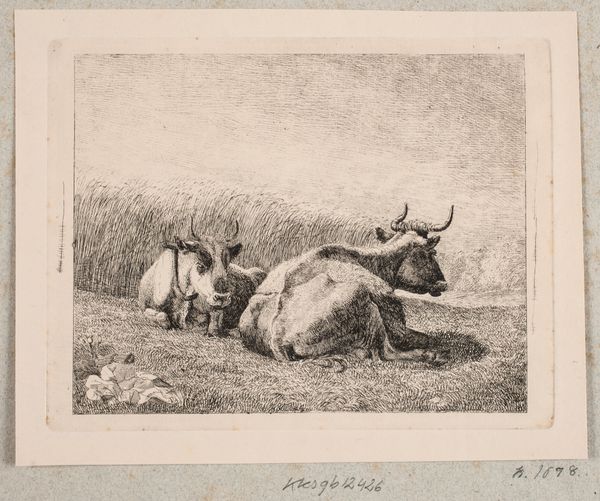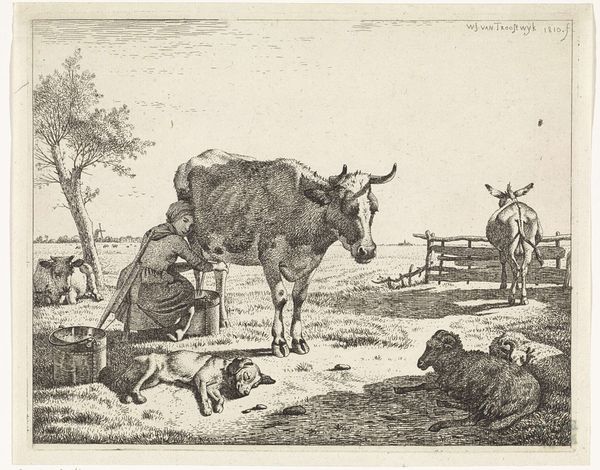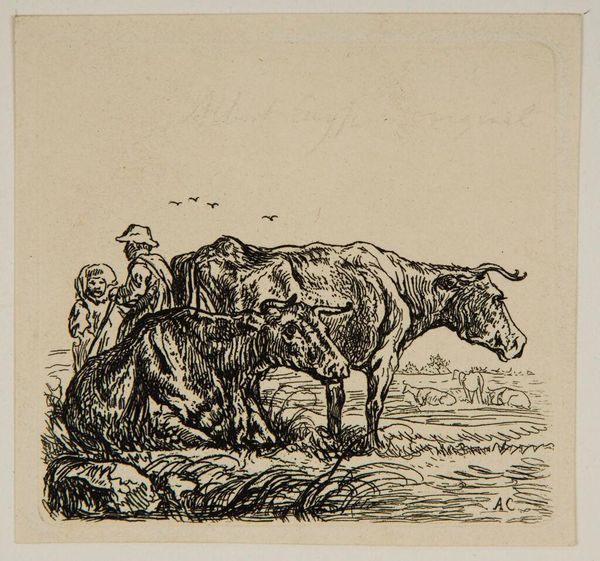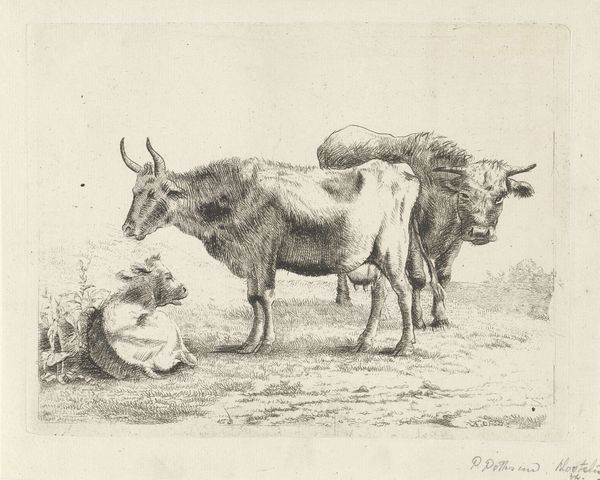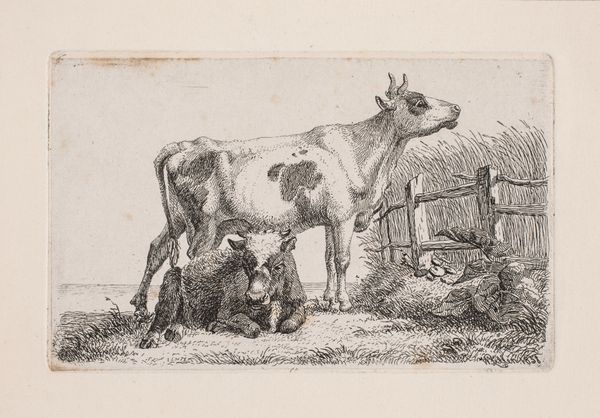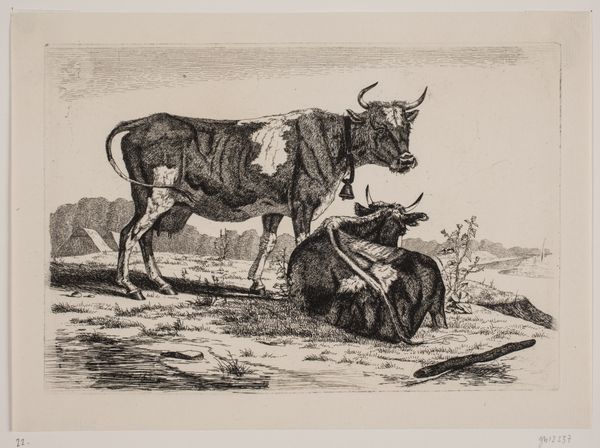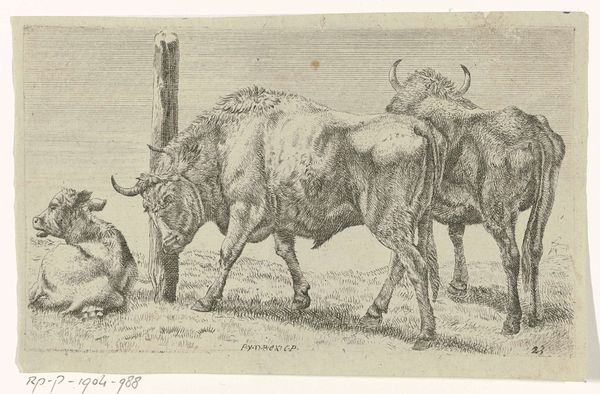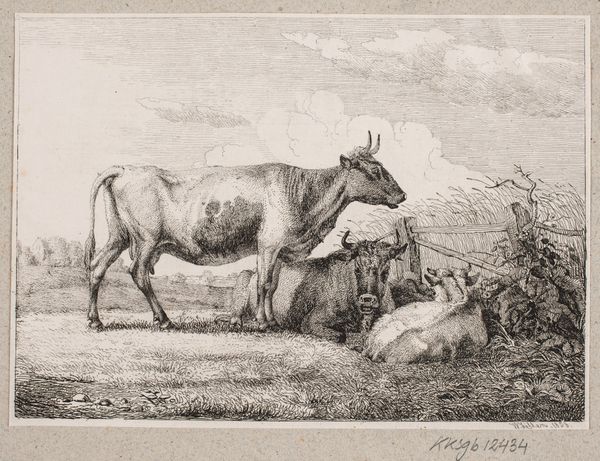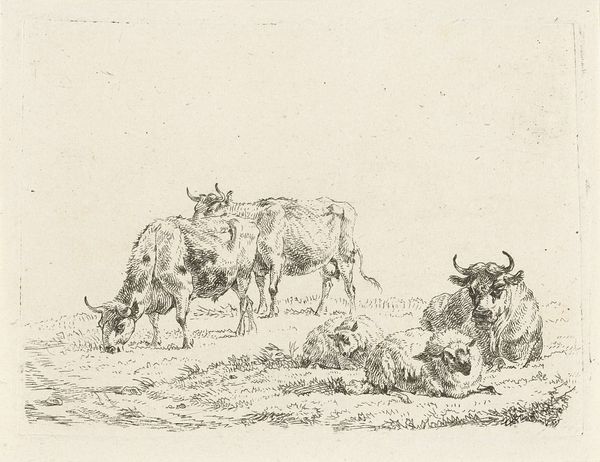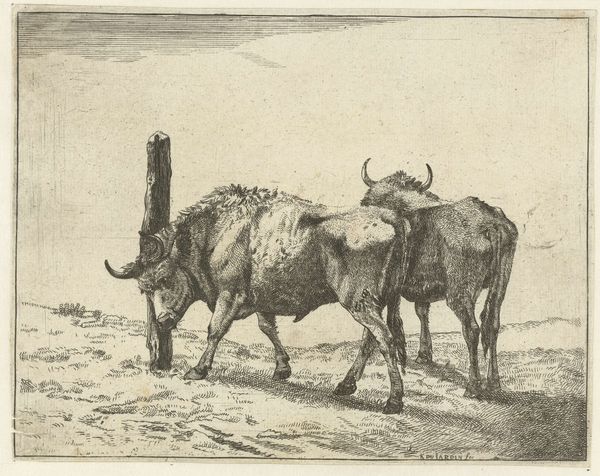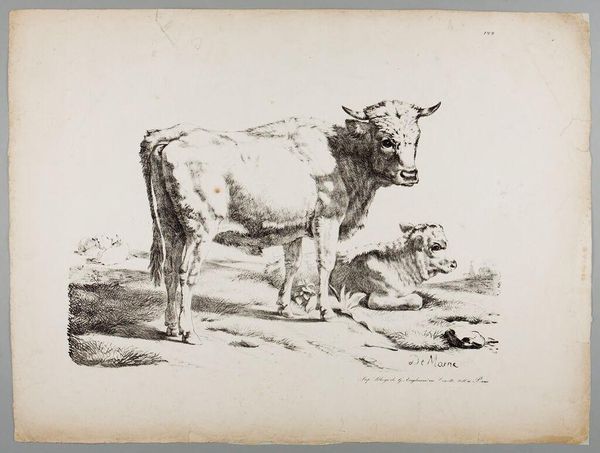
drawing, print, engraving
drawing
landscape
genre-painting
engraving
realism
Dimensions: 71 mm (height) x 117 mm (width) (plademaal)
Editor: Here we have Johannes Wilhelm Zillen's 1857 engraving, "Tre køer," which translates to "Three Cows." The print feels like a snapshot of rural life. I'm struck by how simply the artist captures the essence of these resting animals. What symbols or deeper meanings might be hidden within such a seemingly straightforward scene? Curator: It is a quiet scene. It captures the symbolism of agrarian life, so prominent during this period. Zillen gives us a scene loaded with established iconography. Can you identify which animals in artworks embody prosperity, nourishment, and connection to the land? Editor: I suppose I hadn't considered cows as carrying such heavy cultural weight. But the longer I look, the more I see them as symbols of abundance. Is that the sort of symbolism you're talking about? Curator: Precisely. This image reminds the viewer of a natural and wholesome existence. How do you feel about the artist's choice to focus solely on these cows without a human presence in the engraving? Editor: That absence is interesting. Perhaps it suggests the inherent value of the natural world, irrespective of human involvement. Curator: It reinforces the idea that these animals are central to the story of life. Their presence embodies cycles of nature and nourishment. The engraving process itself carries a history; the lines etched into the plate and then transferred to paper act as a physical record. Each line is a decision, building up to create a lasting representation. Editor: That's a compelling way to look at it. Thank you. Now I see how a simple image of cows resting in a field is much more than it seems! Curator: Indeed. A quiet scene may invite contemplation. The image resonates with me still as an icon of serenity in our memory.
Comments
No comments
Be the first to comment and join the conversation on the ultimate creative platform.
